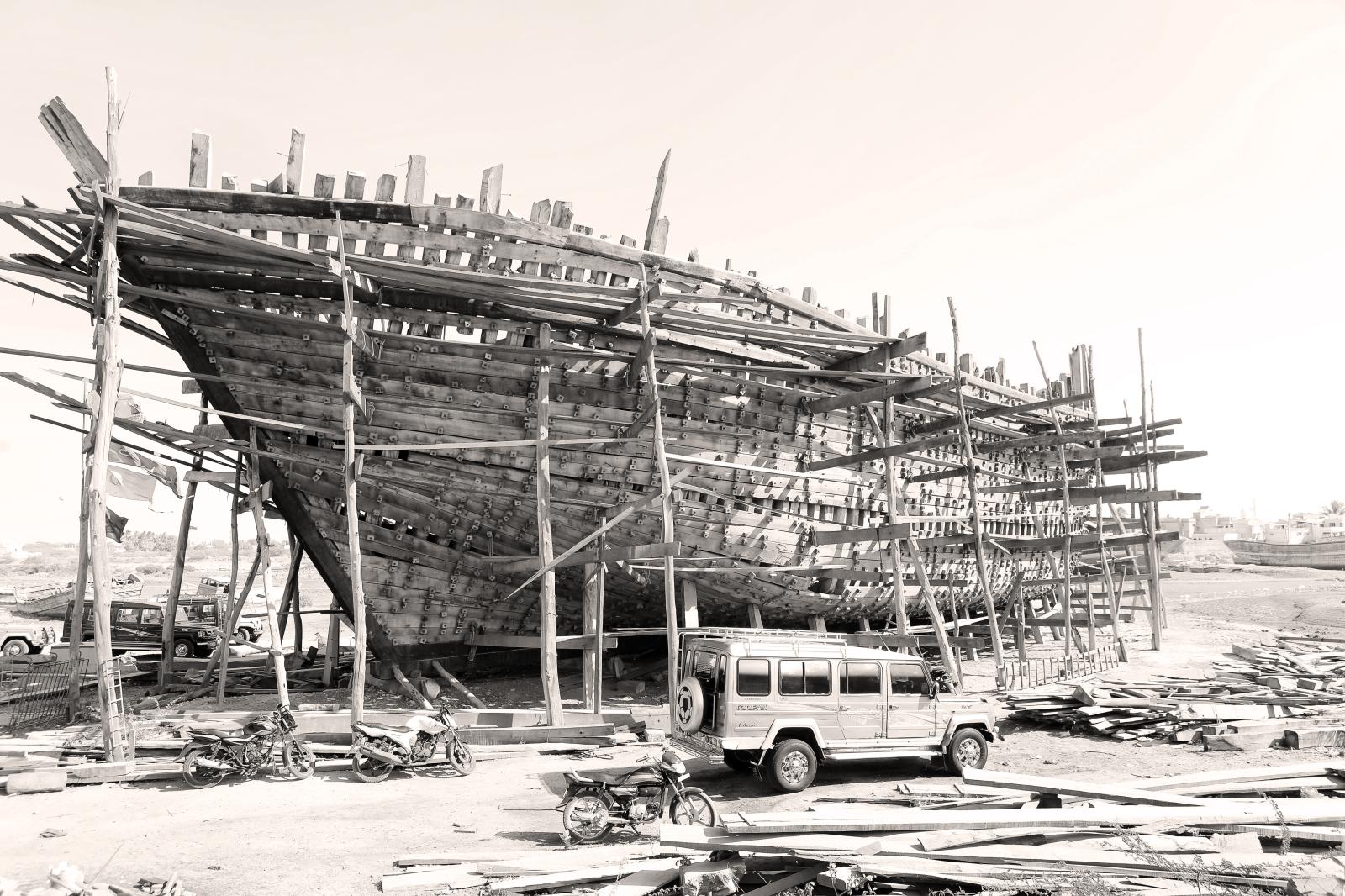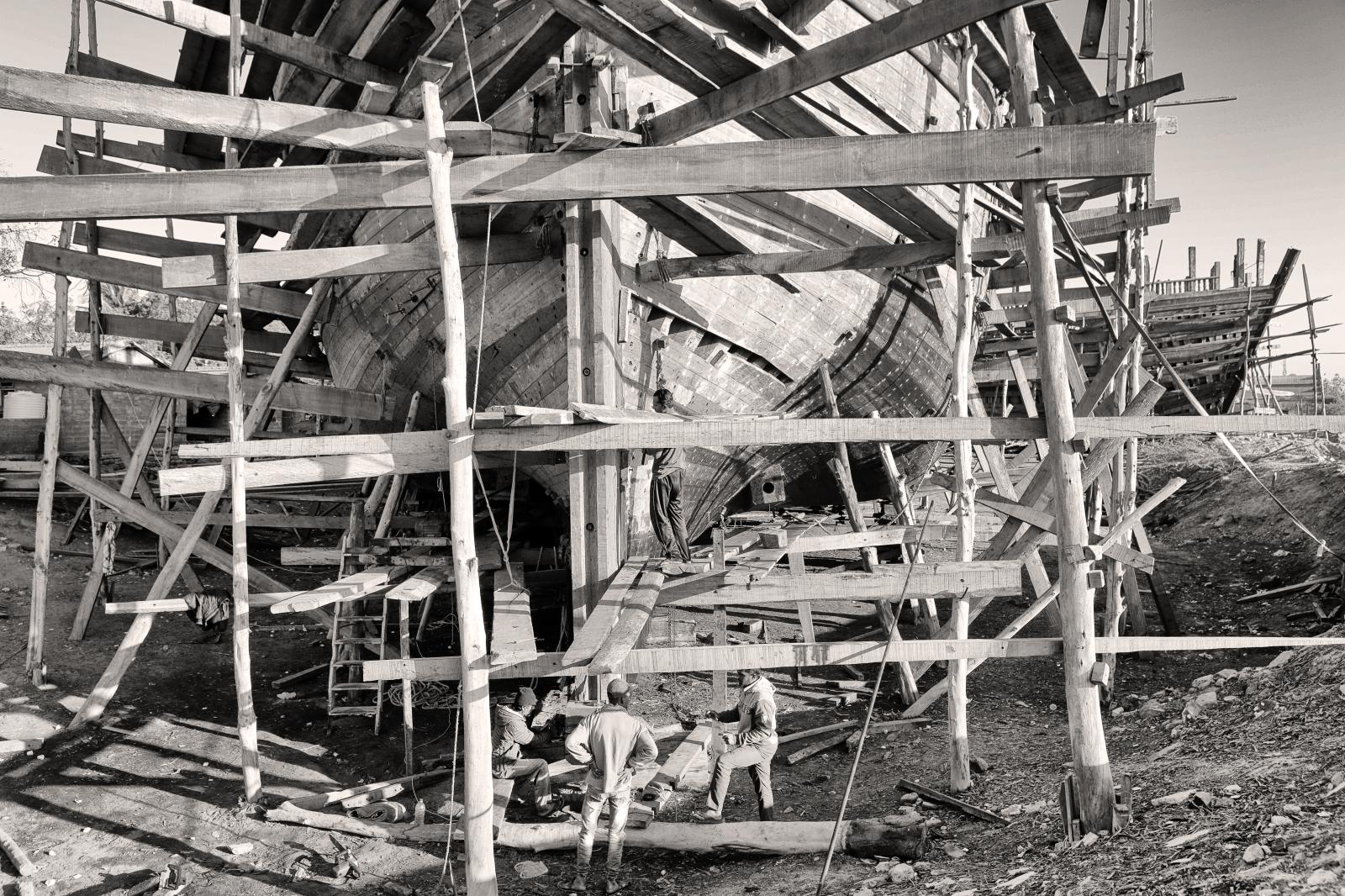Public Story
the last dhows : Ship builder of the sea of Oman
Summary
As an art passed through generations, Dhow building is an
undocumented practice. There are no plan, sketches or
blueprints to refer to. From conception to completion,
it is in the mind of the master-carpenter in the yard…
Today’s ships are made of steel, thus making the Dhows
obsolete in modern maritime trade. These wooden boats,
which traversed the Indian ocean shipping spice and silk,
are now built on order of rich Arabs and Royalty in the
Middle East, to function as luxury yatchs or floating
restaurants.”
undocumented practice. There are no plan, sketches or
blueprints to refer to. From conception to completion,
it is in the mind of the master-carpenter in the yard…
Today’s ships are made of steel, thus making the Dhows
obsolete in modern maritime trade. These wooden boats,
which traversed the Indian ocean shipping spice and silk,
are now built on order of rich Arabs and Royalty in the
Middle East, to function as luxury yatchs or floating
restaurants.”
As maritime trade grew, traders developed a new expertise : boat making and repairing to add to their traditional navigation skills. They became known for building their own ships, known as Dhows, that would sail their cargo throughout the region. Today, this 400 year-old tradition survives in Mandvi, in shipyards lining the Rukmavati river where a half dozen large Dhows are in diverse state of construction.
It takes an average of three years to build a 2000-tonnes dhow, a long and elaborate process that start with a single beam that will form the base of the ship’s hull. Large planks of wood are chiseled into place to make the frame that will support the boat’s shape. The boat makers bend, curve and twist the wood with fire to build a shell fitted together with hundreds of nuts and bolts. The gaps between the planks are filled with sealant made of cotton dipped in fish oil to make the vessel watertight. The structure is glued together and sealed again and again before being treated to several coats of paint to create a ship strong enough to sail safely throught the roughest sea and storms. The process is almost entirely handmade, with only a few power tools like drills and chainsaws.
The workers are from the local muslim carpenter community, with no training in engineering and without so much as a plan being referred to. The older workers have the skills from generations of ship building. Younger worker provide the much needed hard labor force, carrying, moving and loading huge logs and planks.
Most of the wood is imported from Malaysia, the rest comes from India.
The competition from steel hulled ships makes it hard to find new customers and the demand has been shrinking for the past 20 years. There were once 50 dhows being built on the shore of the Rukmavati, today just 6 are being worked on.































